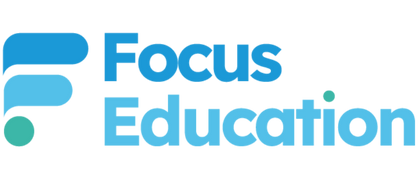
EAL Learners in primary schools
The group of children that we “name” EAL learners, is not a homogeneous group. These children come from many different ethnicities, different cultural experiences, different life experiences (some of them challenging and traumatic), and different educational experiences and expectations. What they all have in common is that they have to learn English alongside curriculum learning; no mean task! This article looks at EAL Learners in primary schools and some of the challenges they have to overcome in order to learn English alongside learning the different areas of the curriculum.
My Story
As an adult, I moved to work and live in Italy. I began with a smattering of tourist Italian; basic survival language. Working in an international school, the language used was English and it wasn’t really until I met my now husband that I began to acquire the language. I remember the times when I could pick out words that I understood, but was unable to make sense of the conversation. I clearly remember a time at a family meal – my husband is the youngest of 5 – and being able to more or less understand the conversation, but by the time I had worked out something to say, the conversation had moved on! I remember the concentration required and the resulting exhaustion and frequent feelings of frustration. Learning a language is very hard work. My experiences have most definitely influenced the way I approach the teaching of EAL learners in primary schools.
EAL Benefits for all Children
There is a distinct EAL pedagogy, and EAL practice is good practice for all. With its focus on experiential learning, vocabulary development and language structures and features within the grammar expectations, there are obvious benefits for all children in primary schools. Within the new curriculum, there has been little specific mention of our EAL learners. The DFE have published the new Proficiency Scales to provide a snapshot of information about the level of proficiency in English of EAL learners in primary schools. However, they do not provide the necessary detail or understanding about progression in EAL or support teachers in planning next steps in the acquisition of English. Whilst EAL learners must be assessed against the national system in place in all curriculum areas, it is essential that they are also tracked for their progress in language acquisition. This is particularly important for more advanced learners and those who have a good level of oral competence. The needs of these pupils are often missed and can result in poor progress and attainment as the language demands of the curriculum increase.
Measuring Progress of EAL Learners in Primary Schools
Progress can be very rapid in the early stages of learning another language. Children learn from their peers and may acquire every day, social language in a relatively short space of time, but certainly within a year or two of beginning. At this stage of development, EAL learners sound quite fluent, but may already begin to slip behind both in language and curriculum learning if their language learning is not accurately assessed and planned for. They need to be taught and need to practise and use academic, higher order language. Jim Cummins refers to this as CALP – cognitive academic language proficiency – and his research shows that this takes between five and seven years to acquire.
Without explicit teaching, EAL learners will not continue to progress in English or in curriculum learning. Learning a language is much more than just learning vocabulary, grammar and pronunciation. EAL Learners need to understand how to use them appropriately for different purposes and audiences. These purposes or functions, such as evaluating, predicting, explaining, are linked to thinking skills and must be taught explicitly.
EAL Learners: Things to Consider
It is important to bear in mind that assessment of EAL Learners should take into account evidence from all curriculum areas and not just English. EAL learners will be developing language in all subject areas and there are many learning opportunities across the curriculum. Every lesson is a language and literacy lesson for an EAL pupil.
Development and progress will often appear uneven. In some EAL learners, oracy may begin to develop rapidly. Others may remain silent while their listening and literacy skills show progress. In some older, beginner pupils with well-developed L1 literacy skills, reading and writing may develop sooner than speaking. In general, writing for EAL Learners develops at a slower pace as it tends to be dependent on the level of spoken English.
The Importance of Speaking and Listening for EAL Learners
I don’t think there is anyone who is not aware of the importance of speaking and listening, but just including opportunities does not mean that children are hearing and using the language needed for formal oral presentation or for writing. There are two kinds of talk and both are essential; exploratory talk and guided talk. Exploratory talk is collaborative in which children explore, exchange and develop ideas. In guided talk, children have the sentence structures linked to the purpose/function of their talk made explicit. The expectation is that they will use the ideas developed in full sentences, in standard English and in the appropriate register for the context. This requires careful planning and modelling. The focus on grammar in the current curriculum is helpful and supports this process and planning.
The Challenges of Reading for an EAL Learner
Currently, reading is a key issue for primary schools. Native English speakers are finding the raised expectations and the range of texts quite a challenge. So, what of EAL learners and the challenges they face? The challenges of reading for an EAL Leaner in a primary school include: understanding of vocabulary; understanding of cultural context; using syntactic cues for making meaning; understanding of idiomatic phrases, words with multiple meanings, figurative language. All these aspects need to be considered before inferential and deeper understanding can happen.
Vocabulary
Vocabulary is an enormous undertaking for EAL learners. English has a vast number of words, more than in many other languages. Added to this, over seventy percent of words in English have more than one meaning dependent on their context. Knowing a word involves much more than being able to decode it. It is much more knowing what it means in one context. Understanding what a word means takes time and involves meeting the word many times in different contexts. In addition to words having more than one meaning, they can belong to different word classes depending on how the job they are doing in the sentence. They may also have figurative meanings or combine with other words to form compound words. Vocabulary is not just about single words, but also “chunks” of language. For example: Switch the light on; He ate a light meal; Connect the circuit and the bulb will light up; Sunlight flooded the room; The streetlight shone on the open door; Lighten up; Light-hearted; He went out like a light; Can you shed any light on it?; She has seen the light. What a minefield!
Word Detectives
We can never teach children all the words they need to know, but need to teach them how to be word detectives. There needs to be a constant focus on vocabulary and word meaning and opportunities built in regularly to explore meaning and play with words.
As a second language learner myself, I would say that this process never stops. I continue to refine my Italian, particularly in the most formal situations and I continue to learn new words as I experience different situations.
Continue the Conversation on EAL Learners and the New Curriculum in Primary Schools
For more information on EAL Learners and the new curriculum in primary schools, keep an eye on the Focus Education blog, find me on Twitter @FocusRos or get in touch with the Focus Education office on 01457 821 818.
Ros has over 30 years’ experience working in teaching and leadership roles in schools, both nationally and internationally, as well as leadership roles within Local Authority advisory teams.
With extensive experience in all aspects of school improvement and contexts, as well as specialisms in English and EAL, Ros has developed inspirational, creative resources and training which puts English at the heart of the curriculum.






